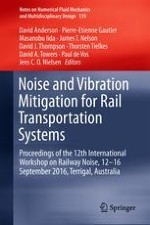2018 | OriginalPaper | Chapter
Low Cost Noise Barriers for Mitigation of Rail Noise
Authors : L. Basutu, W. Chan, D. Hanson, B. Dowdell, C. Weber
Published in: Noise and Vibration Mitigation for Rail Transportation Systems
Publisher: Springer International Publishing
Activate our intelligent search to find suitable subject content or patents.
Select sections of text to find matching patents with Artificial Intelligence. powered by
Select sections of text to find additional relevant content using AI-assisted search. powered by
